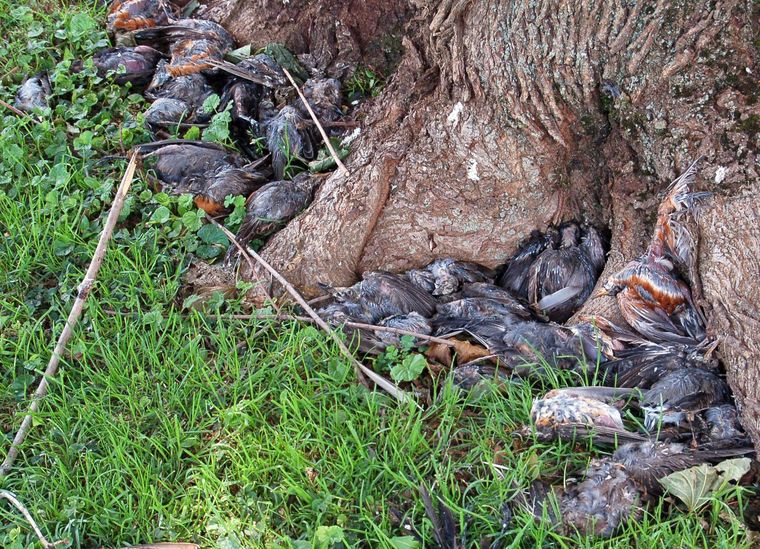
A deadly downward rush of air, known as a microburst, uprooted roosting songbirds from trees in the Leola, Gordonville and Bird-in-Hand areas and slammed them around.
"It appears they were literally blown into the tree branches, the ground - even into each other," says Greg Graham, the Pennsylvania Game Commission's wildlife conservation officer for northeastern Lancaster County.
"It doesn't happen often."
The unusual microburst conclusion was reached after the Game Commission sent the refrigerated carcasses of three robins and two house finches to the diagnostic section of the Southeastern Cooperative Wildlife Disease Study Lab in Athens, Georgia.
The birds were among about 150 collected by Graham on July 28 from four locations within 150 yards from each other in the Magnolia Drive and Ricklin Drive areas near Leola. Most were robins with a few wrens, sparrows and grackles mixed in.
Some birds survived the event but later died.
Since then, two Amish publications reported two other large bird kills on the same night. Graham was unaware of the incidents until contacted by a reporter.
Die Botschaff, a weekly newspaper based in Millersburg, noted that 270 birds, mostly blackbirds, were picked up in a church parking lot in the Gordonville area.
The Diary, a monthly Amish publication out of Gordonville, similarly reported that 130 dead sparrows were found at a location in Bird-in-Hand.
The initial report near Leola caused widespread speculation about what killed the birds. Some theories by Graham and residents included a lightning strike, hail, poison left for nuisance birds on a farm, hypothermia, drinking from a pond tainted by antifreeze and a toxic chemical trail left by a jet.
Necropsies - autopsies performed on animals - ruled out West Nile virus and Salmonella.
All the birds had died of traumatic injuries. The cause, veterinarians at the Georgia lab concluded, was a meteorological oddity.
"Barometric changes associated with strong thunderstorms can create microbursts that produce a column of quickly sinking air, which can cause birds to seemingly fall out of the sky," the veterinarians commented.
"Birds may also become disoriented and stressed due to the strong weather, causing them to rouse during the night and fly into objects."
Graham noted all the dead birds were clustered at the base of large deciduous trees, indicating they had flocked to roosting spots when the storm hit. He found 95 birds under a single tree on Magnolia Drive.
The storms of July 27 in Lancaster County were memorable. They lasted from about 8 p.m. and until midnight, dumping from 2 to more than 4 inches of rain around the county. There were more than a dozen water rescues around the county, most centered in eastern parts of the county.
Hail was reported in some areas. More than 1,500 people lost power.
Microbursts are opposite of tornadoes. Instead of spinning, violent bursts of sinking air slam straight downward until hitting the ground and spreading out in all directions. The microbursts are very localized and often have high winds capable of knocking over mature trees.
Microbursts have been known to make birds seemingly fall out of the sky.
Graham says he has never encountered an event with such intense mortality.
"In talking to our wildlife biologists and veterinarians, these things do occur but not that often. We get plenty of thunderstorms on a daily basis somewhere in the United States, but yet you rarely hear about this type of situation."



Comment: SOTT wonders what will happen when macro-bursts of this type begin happening?